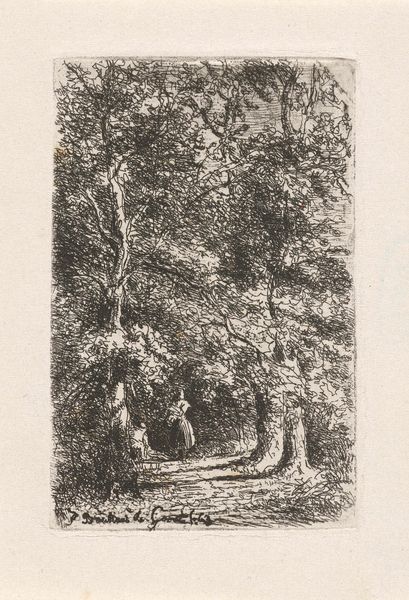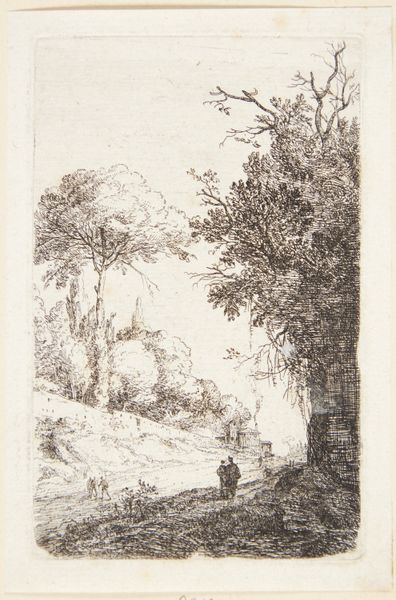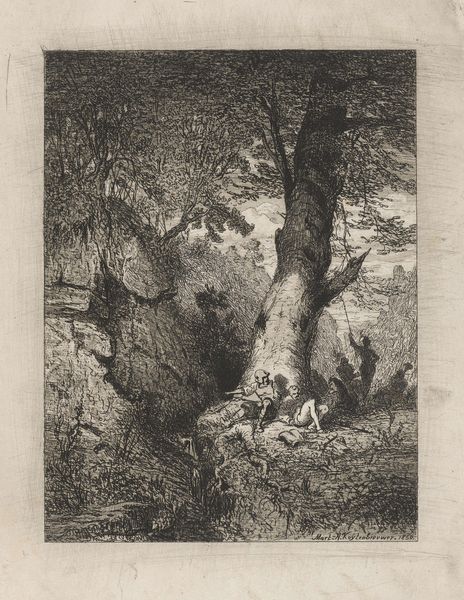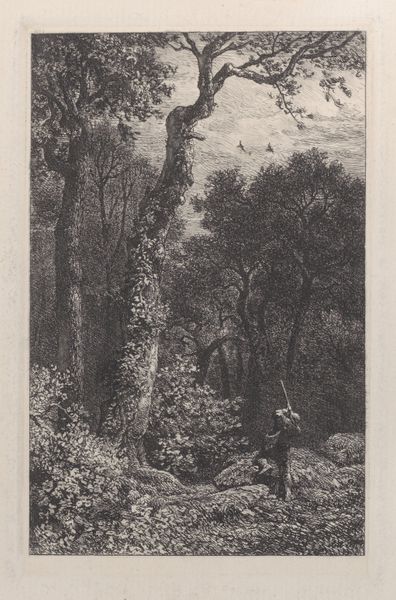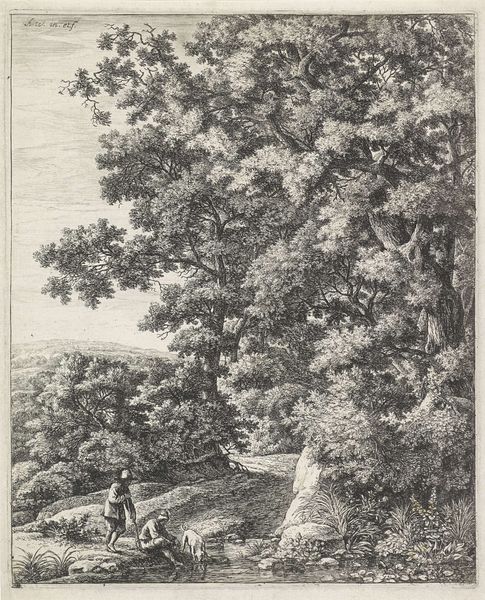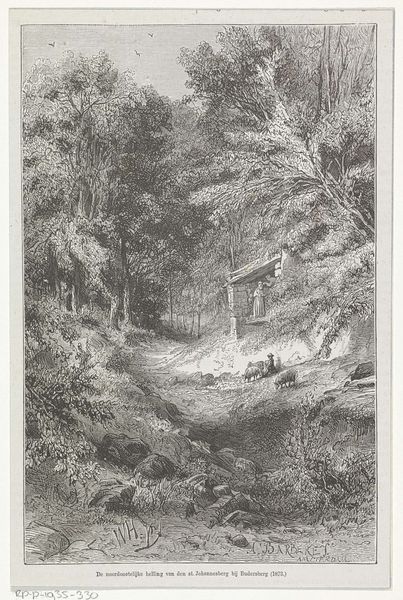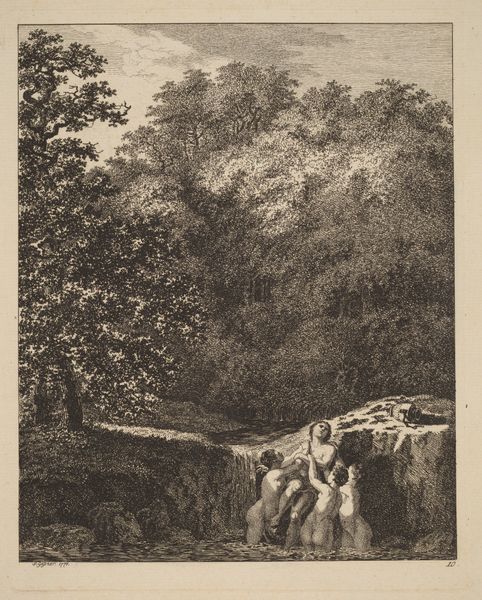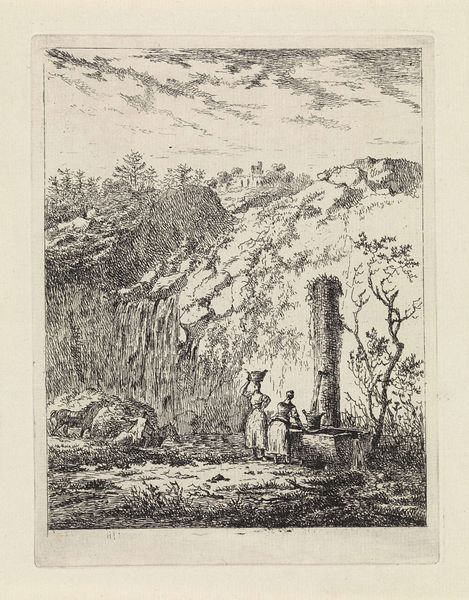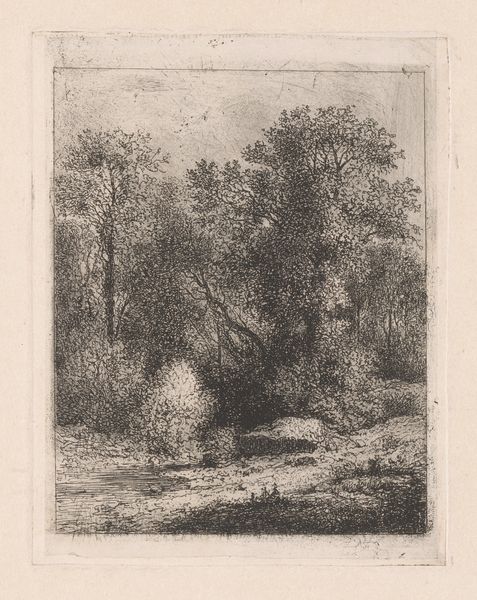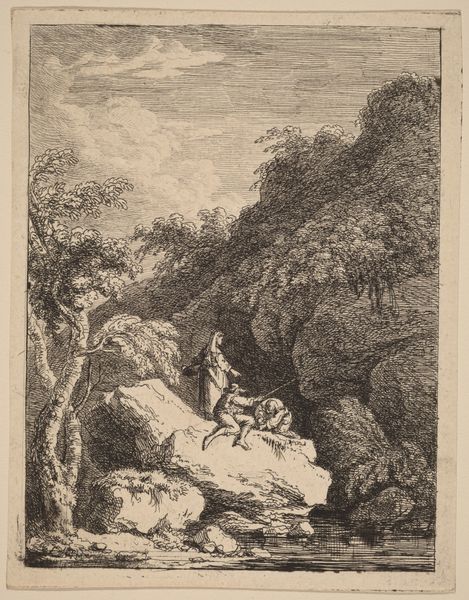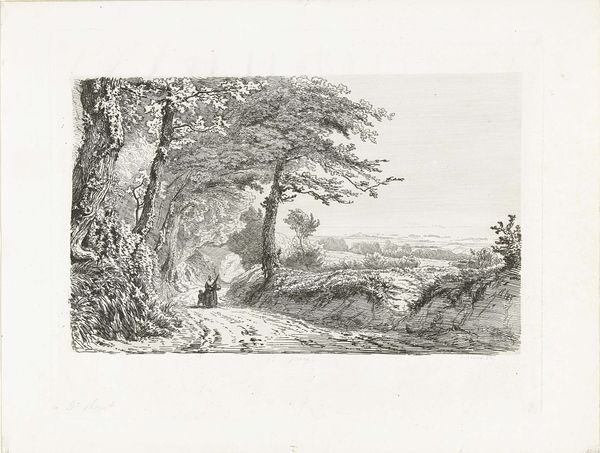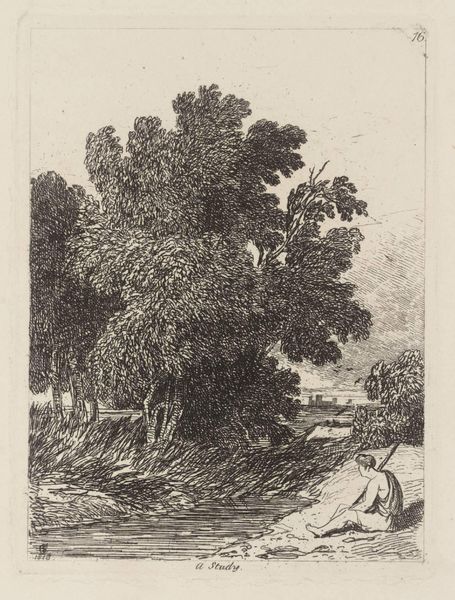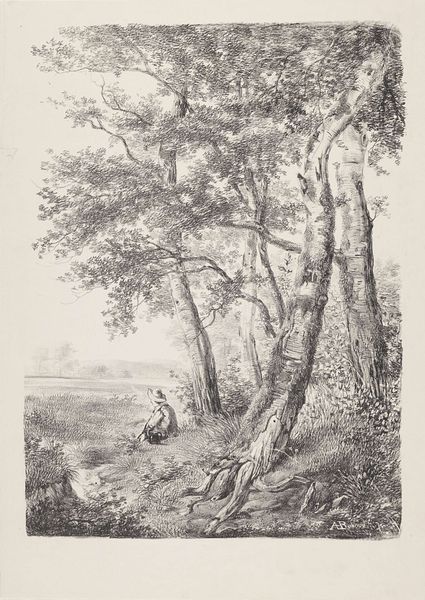
Bidprent ter nagedachtenis van Joannes Arnoldus Schaepkens, de vader van de kunstenaar 1849
0:00
0:00
print, engraving
# print
#
landscape
#
figuration
#
engraving
Dimensions: height 137 mm, width 102 mm
Copyright: Rijks Museum: Open Domain
Editor: This is "Bidprent ter nagedachtenis van Joannes Arnoldus Schaepkens, de vader van de kunstenaar," an 1849 engraving by Alexander Schaepkens, currently at the Rijksmuseum. The image feels quite solemn, like a small devotional scene, and the figure is surrounded by a dense, almost overwhelming landscape. What should viewers make of a print like this? Curator: Well, let's consider the historical context of the *bidprent*. These prayer cards were quite common in the 19th century, especially in Catholic regions, as personalized memorials. This one is particularly poignant as it was created by the son to commemorate his father. In this context, what does the landscape represent for you? Editor: I suppose it could be seen as a representation of the father's life, maybe his connection to nature, or perhaps just the quiet peace the artist hopes he has found. But how did the institutional context, say, the church, shape this kind of imagery? Curator: The Church greatly influenced the iconography and function of these prints. They were intended for wide distribution, reinforcing religious values and social cohesion through shared mourning and remembrance. The landscape serves as both a reflection of earthly life and a pathway to spiritual contemplation. Editor: That's interesting. So, this isn’t just personal expression but also a product of communal and religious expectations? Curator: Exactly. And consider the politics of imagery at the time. Religious imagery was a powerful tool, and *bidprenten* contributed to maintaining social order by promoting piety and familial devotion. How does recognizing this broader context impact your view? Editor: It makes me see it as less intimate and more like a piece functioning within established social structures. It definitely adds a new layer of understanding to this otherwise simple memorial. Curator: Precisely. Art serves both the personal and public domains, and that’s often where its richness lies. Editor: I’ll definitely be paying more attention to the historical context of images like these from now on. Thanks!
Comments
No comments
Be the first to comment and join the conversation on the ultimate creative platform.
